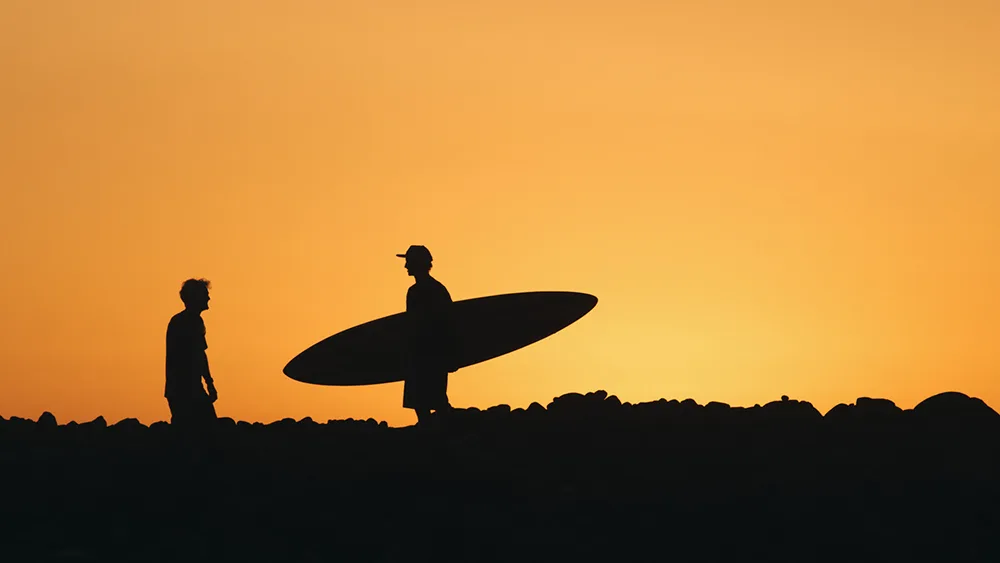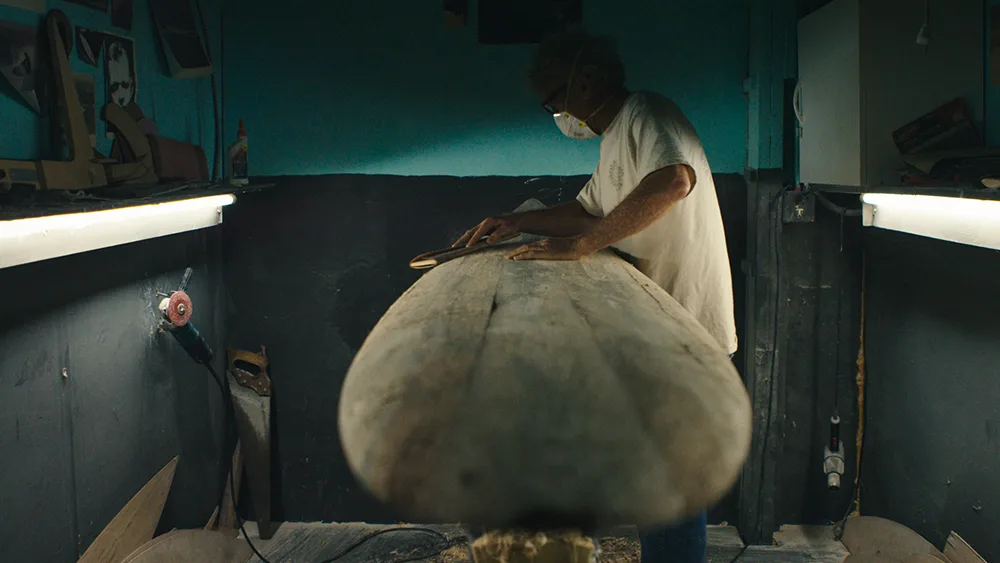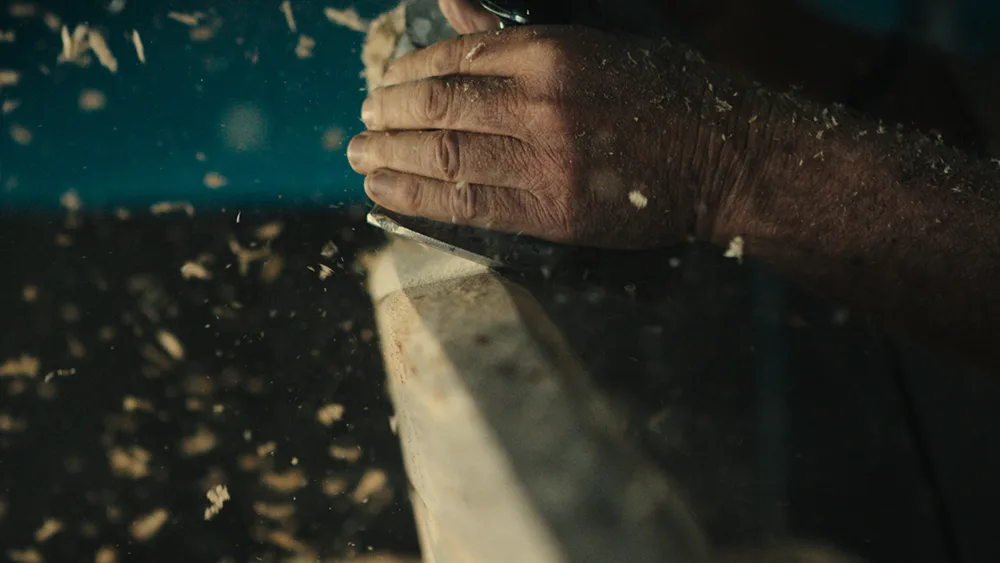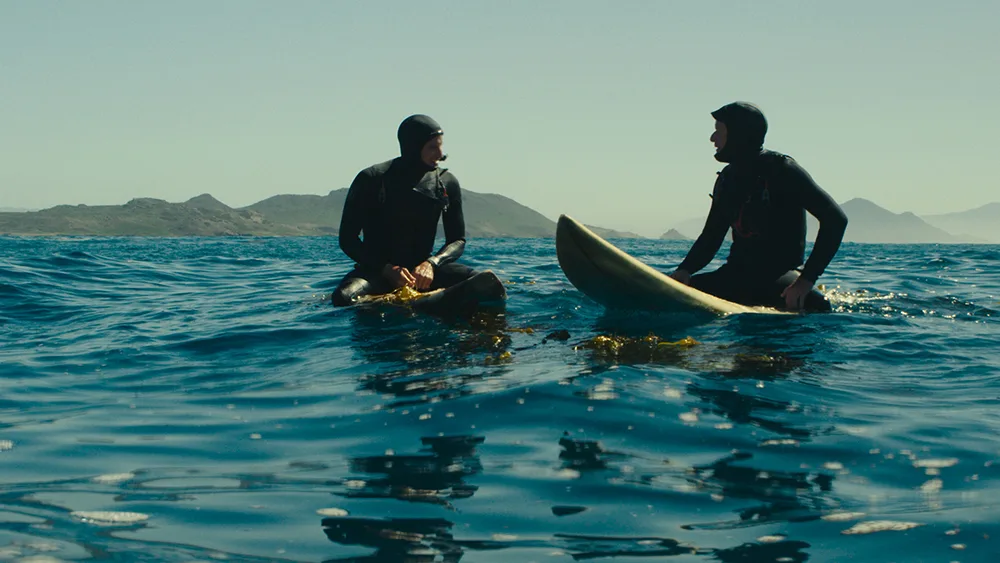

Common across Mexico and the southwestern United States, agave plants are known for their longevity – nicknamed the century plant, they bloom once and then die. But their strong, flexible stalks can have second lives in the right artisan’s hands.
When filmmaker Ross Haines found out Gary Linden was building a surfboard using this material – the Agave Gun – he knew it was a story he wanted to tell.
Ross grew up in Santa Cruz – “a foggy little surf town in Northern California” – and was fascinated by the ocean from a young age. This interest continued into college where he studied marine biology, but he needed a couple of extra credits to get his degree. “I took a photography and documentary film class and that was it – I was hooked. I abandoned marine biology and went all-in on the filmmaking.”
He first met Gary through his commercial work (he’s directed spots for Nike, Jeep and Vans among others) and was immediately drawn to his unusual character, a man of many interests with a single-minded determination.
“Every time I saw him, he had a new story, and each one was more incredible,” Ross says. “I always joked that he’s like a real-life version of the world’s most interesting man from those silly beer commercials – that character has nothing on Gary.”
Having previously made a documentary about the environment for a non-profit, Ross saw that the Agave Gun was a “perfect opportunity.”


The film is actually two, interconnected stories. Firstly it’s about Gary and his sublime craftsmanship – “I just let my hands and my subconscious take over. It’s a one-man show all the way.” And then there is a jump-cut at around 4m28s and we are out on the water off the Mexican coast, following surfer Alex Gary as he takes the board out for its baptism.
“First and foremost, it’s a story about Gary,” Ross explains. “It was a once-in-a-lifetime project, a special day for him, and an amazing experience for all of us who got to witness it. However, I think adventure is the vehicle that drives the film. Along the way it gives us opportunities to touch on other things like sustainability, a lifetime dedicated to an art form, big wave surfing.
“People are smart and I didn’t want to go too hard on any one idea or shove any philosophy in their faces. You can take what you want from it.”

The climactic scene sees Alex taking on a huge wave on the Agave Gun. It’s beautifully shot, narratively pitch-perfect and pulls together yet another theme of the film – “the idea that you can’t control Mother Nature.”
Ross explains, “All the elements lined up for us. It was a gift. At that point I felt almost obligated to tell the story; like the pressure was on me to share what had happened and do it justice.”
This scene seems to be completely silent; maybe a low rumble of a wave somewhere in the background. This is quite a departure for a film where sound plays a crucial role (so much so that on Vimeo, Ross encourages viewers to wear headphones and turn the volume way up).
“The sound designer is amazing and we went back and forth quite a few times working on version after version until it felt right,” Ross says.
“In the end, I think it works because it's unexpected. It grabs you because you’ve been ramping up to this big bang and then suddenly there’s nothing. It’s a nice place to take a breath and it makes those few seconds feel like minutes. There is actually something there, on the very low end of the spectrum, but you have to have the volume maxed out with crazy speakers to catch it.”
I felt obligated to tell the story; like the pressure was on me to do it justice
If some parts of the creative process come down to deliberate decisions, others flourish thanks to pure luck. The Agave Gun is interspersed with old home video footage, and its inclusion was a complete happy accident.
“Gary never mentioned it,” Ross says, “then one day he said I should contact an old friend of his. I gave her a call and voila! Goldmine!
“Suddenly there’s Gary in his favorite place on the planet 30 years earlier – a perfect, fuzzy VHS memory. It nearly chokes me up because I remember Gary getting emotional talking about those years visiting the island, and how important it is to him. There’s a real gravity between him and that place.”
The result is a different sort of surf film, with a depth and nuance often missing from the genre. Ross thinks he was “hyper-aware” of surf film clichés, having lived in Hawaii for a time and worked on many surf shorts. In the end, his aim was just to focus on the story in front of him.
“Every genre has clichés,” he says. “I was just trying to tell a story from a perspective that would interest me.”

